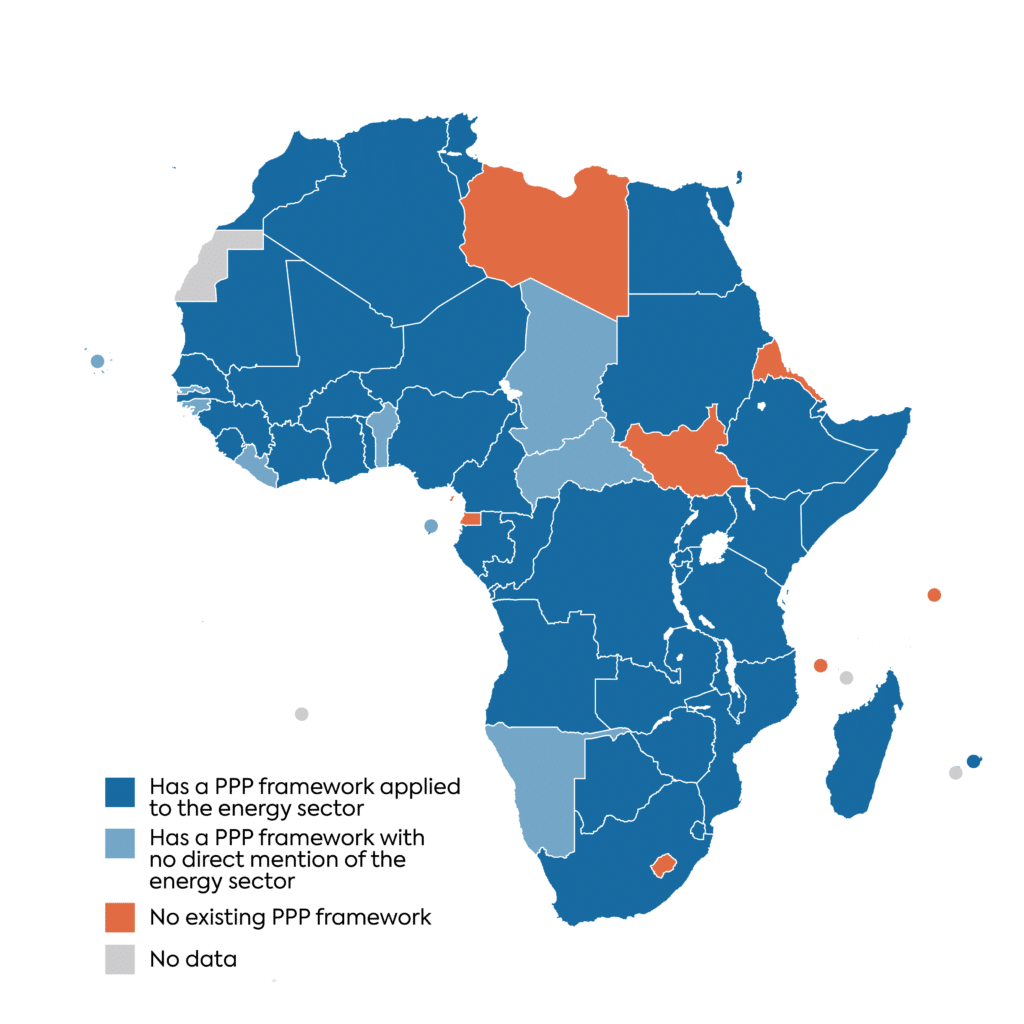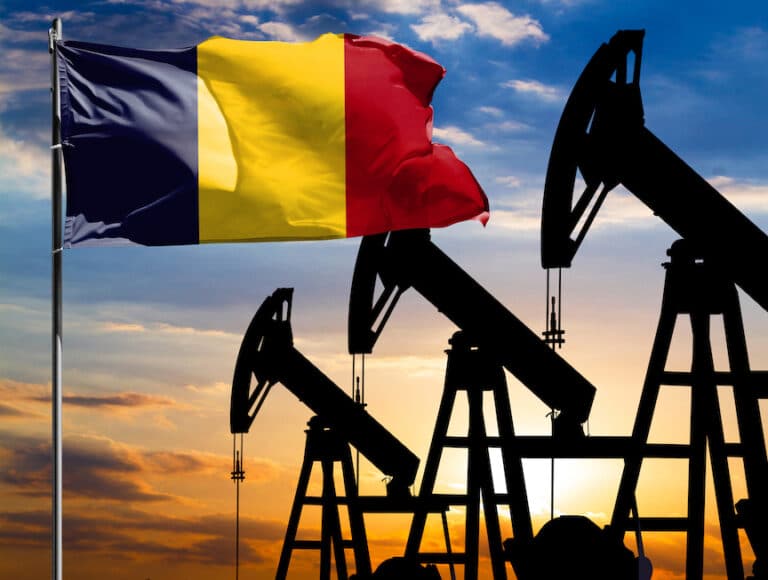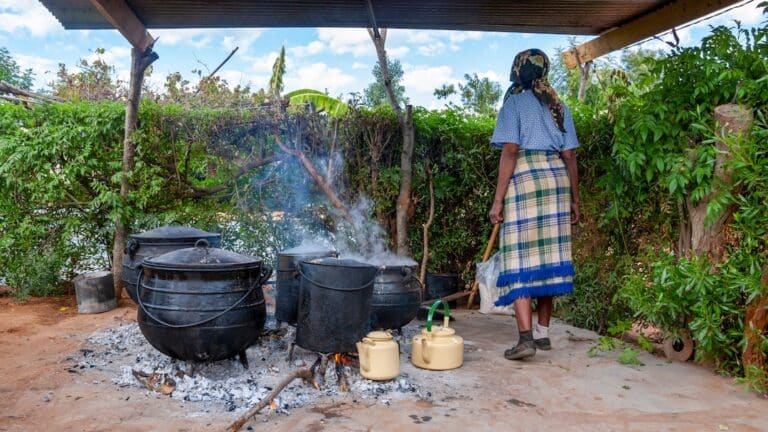Full report
Public-Private Partnerships in the African Energy Sector
Fact Sheet by Alexandre (Sacha) Rongé, Vivek Shastry & Andrew Kamau • April 30, 2024
Fact Sheet by Alexandre (Sacha) Rongé, Vivek Shastry & Andrew Kamau • April 30, 2024
Given Africa’s rapidly increasing population and the global target to reduce greenhouse gas emissions, universal access to electricity and decarbonization of energy systems are priorities for the continent.[i] Financing Africa’s energy shift will require creative approaches due to limited access to capital and high political and regulatory barriers. Public-private partnerships (PPPs) offer one strategy that can help governments navigate the energy transition effectively.
PPPs have been widely used for financing and operating a range of public services such as energy infrastructure, transportation, and telecommunications. These partnerships’ delivery models vary in terms of financing structure, allocation of asset ownership, and operational responsibilities among stakeholders at various stages of a project. The most common models include the following: design-build, design-build-finance-operate, build-own-operate-transfer, and build-lease-operate-transfer.[ii]
PPPs typically manifest in two non-mutually exclusive ways in Africa’s energy sector. After a government body enters into a concession agreement with the private sector for a specific project, it can decide to take an equity commitment in the project’s financial structure, participate actively in the development of the project, and receive a risk-adjusted return. Alternatively, the government can become an “off-taker”or buyer, typically through its public utility, and commit to buying the project’s services for a specified period, hence guaranteeing a certain level of revenue for their private counterparties. Off-take agreements can take different forms depending on the type of asset (generation, transmission, distribution, etc.).
Most African governments are facing challenges in closing the energy infrastructure gap due to increasingly limited fiscal capacities. The COVID-19 pandemic, coupled with the conflict in Ukraine,[iii] has further hampered their ability to finance infrastructure amid swiftly escalating debt levels.[iv] In sub-Saharan Africa, the overall average debt ratio has significantly increased over the past decade, from 30% of GDP at the end of 2013 to nearly 60% at year-end 2022. As of 2022, more than half of low-income countries in sub-Saharan Africa were at high risk for, or were already in, debt distress.[v] Consequently, with Africa’s estimated annual energy infrastructure need of up to $170 billion, PPPs are becoming a resource for governments to further develop their energy sectors.[vi]
The World Bank highlights[vii] several advantages of PPPs from a government perspective, including their ability to:
Even though PPPs can amplify investments in Africa’s energy sectors, their structures and implementation are complex. According to the World Bank,[viii] the main risks a government faces when entering into a PPP agreement include the following:
The key to mitigating most risks and overcoming contentious situations lies in the government having a strong PPP legal and regulatory framework, as well as technical capacity to negotiate contractual agreements with the project company. Due to PPPs’ long-term commitments, governments will need to address unforeseen issues and disputes that may arise in the distant future. This demands not only technical expertise but also stable political, economic, and regulatory structures, enabling bilateral willingness to respect contractual obligations. Achieving this balance has been a significant challenge for some African countries in implementing PPPs.[ix]
Eighty-seven percent of African countries possess some form of regulatory framework that provides guidelines for developing PPPs. Among these countries, 80% claim to have frameworks that are applicable to the energy sector, though the level of comprehensiveness and detail of each framework varies. A country’s ability to attract private entities to enter into PPPs, however, depends not only on the presence or quality of its PPP regulatory framework but also on the private entity’s comfort level with the country’s institutional capacity, political stability, and capital market maturity, among many other factors.
Based on various World Bank Group databases[x] compiling PPP-related evaluation metrics, Kenya, Morocco, South Africa, and Zambia can be considered the most mature countries in terms of energy PPPs, followed by Côte d’Ivoire, Ghana, Nigeria, Senegal, Tanzania, and Uganda. Countries including the Central African Republic and Guinea-Bissau, which have PPP frameworks, have yet to implement any energy PPP projects.

Source: Author creation based on World Bank, “Benchmarking Infrastructure Development,” 2023.
[i] International Energy Agency, Africa Energy Outlook 2022, https://www.iea.org/reports/africa-energy-outlook-2022.
[ii] TechTarget, “What Is a Public-Private Partnership (PPP)?” 2022, https://www.techtarget.com/whatis/definition/Public-private-partnership-PPP.
[iii] The Russian invasion of Ukraine has significantly disrupted global economic stability, leading to increased commodity prices and supply chain issues. African countries, heavily reliant on imports for essential goods, have increased borrowing to manage these economic shocks, resulting in increased debt levels.
[iv] United Nations Conference on Trade and Development, “World of Debt: Regional Stories,” 2023, https://unctad.org/publication/world-of-debt/regional-stories.
[v] Fabio Comelli et al., “How to Avoid a Debt Crisis in Sub-Saharan Africa,” International Monetary Fund, September 26, 2023, https://www.imf.org/en/News/Articles/2023/09/26/cf-how-to-avoid-a-debt-crisis-in-sub-saharan-africa.
[vi]African Development Bank, “Public-Private Partnerships Needed to Bridge Africa’s Infrastructure Development Gap,” African Development Bank Group,” November 17, 2023, https://www.afdb.org/en/news-and-events/public-private-partnerships-needed-bridge-africas-infrastructure-development-gap-65936.
[vii] World Bank, “Government Objectives: Benefits and Risks of PPPs,” June 21, 2022, https://ppp.worldbank.org/public-private-partnership/overview/ppp-objectives.
[viii] Ibid.
[ix] Peter Farlam, “Working Together: Assessing Public-Private Partnerships in Africa,”South African Institute of International Affairs, 2005, https://www.researchgate.net/publication/239601344_Working_Together_
Assessing_Public-Private_Partnerships_in_Africa.
[x] World Bank, “Private Participation in Infrastructure (PPI) Database,” 2023, https://ppi.worldbank.org/en/ppi; African Legal Support Facility,
“Legal & Institutional Frameworks in Africa: A Comparative Analysis,” 2024, https://ppp.worldbank.org/public-private-partnership/sites/ppp.worldbank.org/files/2024-03/2024-02-20%20-%20Survey%20PPP%20Legal%20%26%20Institutional%20Frameworks%20in%20Africa%20%28EN%29.pdf; World Bank, “Benchmarking Infrastructure Development,” 2023, https://bpp.worldbank.org/en/home.
Long before crowdsourcing became a worldwide phenomenon, “Harambee” (“pulling together”) was the Kenyan national motto. In postcolonial Kenya, fundraising became a way to build schools and hospitals and...

Nearly 775 million people around the globe are estimated to have no access to electricity. In 2022, that number rose.

While tens of millions of people work in formal energy jobs around the world, another group that comprises a massive and key labor segment in this sector is often overlooked: women and girls producing biomass

Full report
Fact Sheet by Alexandre (Sacha) Rongé, Vivek Shastry & Andrew Kamau • April 30, 2024